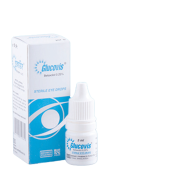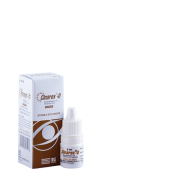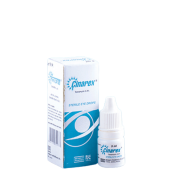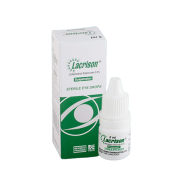Ocutrex Eye & Ear Drops

Generic Name: Chloramphenicol
Dosage Form: Drops
TG Name: Eye Care
1. What Ocutrex is and what it is used for?
Ocutrex eye drop contains Chloramphenicol which is a broad spectrum bacteriostatic antibiotic active against a wide variety of gram-negative and gram-positive organisms. Chloramphenicol exerts its antibacterial effect by binding to bacterial ribosomes and inhibiting bacterial protein synthesis at an early stage. Bacterial species like Staphylococcus aureus, Streptococcus pyogenes, Streptococcus pneumoniae, Other beta-haemolytic streptococci, Haemophilius influenze, Moraxella catarrhalis, Neisseria gonorrhoeae are recognised conjunctival pathogens and may be susceptible to chloramphenicol.
2. Before you take Ocutrex
Do not take this medicine and tell your doctor if:
Chloramphenicol eye drops must not be administered to:
Patients who have a history of hypersensitivity to chloramphenicol or to any other ingredient of the drops. Patients who have experienced myelosuppression during previous exposure to chloramphenicol. Patients with a family history of blood dyscrasias
Take special care with Ocutrex
Check with your doctor before taking this medicine if:
Chloramphenicol therapy is associated with a potential risk of aplastic anaemia or other hematodyscrasias. A careful risk/benefit evaluation should therefore be made in each individual case. The product should only be used where alternative therapies are ineffective and/or contraindicated.
Taking other medicines
Chloramphenicol should not be administered simultaneously with bactericidal substances (penicillins, cephalosporins, gentamicin, tetracyclines, polymyxin B, or vancomycin) since bacteriostatic antibiotics may inhibit bactericidal antibiotics.
Pregnancy and breast-feeding
Pregnancy: The safety of chloramphenicol eye drops during pregnancy and lactation has not been established. As this product is for sale without prescription it is not recommended for use during pregnancy.
Nursing Mothers: In view of the fact that chloramphenicol may appear in breast milk, use of the product during lactation should be avoided.
3. How to take Ocutrex (Administration)?
Taking this medicine
Always use Ocutrex exactly as your doctor has told you. You should check with your doctor or pharmacist if you are not sure.
How much to take?
Eye: Adults, children aged 2 years and over and elderly: One drop instilled into the infected eye every 2 hours for the first 48 hours and 4 hourly thereafter. To be used during waking hours only. The course of treatment is 5 days. Treatment should continue for 5 days even if symptoms improve.
Ear: 2-3 drops into ear canal three to four times daily
If you take more Ocutrex than you should
If you have too much of this medicine, talk to your doctor straight away.
If you forget to take Ocutrex
If you forget to take a dose, take it as soon as you remember it. However, if it is nearly time for the next dose, skip the missed dose. Do not take a double dose to make up for a forgotten dose
If you stop taking Ocutrex
Do not stop taking this medicine without talking to your doctor. You should not stop taking Ocutrex just because you feel better. This is because the problem may come back or get worse again.
If you have any further questions on the use of this product, ask your doctor or pharmacist.
4. Possible side effects
Like all medicines, Ocutrex can cause side effects, although not everybody gets them.
Transient burning or stinging sensations may occur with the use of chloramphenicol eye drops. Serious side effects include hypersensitivity reactions that may manifest as angioneurotic oedema, anaphylaxis, urticaria, fever, and vesicular and maculopapular dermatitis. Treatment must be discontinued immediately in such cases.
Tell your doctor if any of the side effects gets serious or lasts longer than a few days, or if you notice any side effects not listed in this leaflet.
5. How to store Ocutrex?
Store below 25° C, preferably in a refrigerator; do not freeze. Keep out of reach of children.











